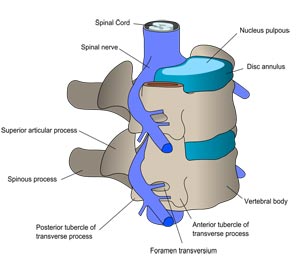Neuropathic pain comes in many forms and typically results from damaged nerve tissue or compressed nerves.
Nerve roots compressed from the spine usually cause cervical or lumbar radiculopathy (sciatica), as well as pain after back surgery (failed back syndrome). Other causes of nerve pain (usually from peripheral nerves) include nerve entrapment (i.e. Carpal tunnel syndrome), peripheral neuropathy (most likely from diabetes), phantom limb pain, or complex regional pain syndrome (CRPS), previously called RSD (reflex sympathetic dystrophy).
Neuropathic pain is typically described as:
- Severe, sharp, electric shock-like, shooting, lightning-like, lancinating
- Deep, burning or cold
- Persistent numbness, tingling, or weakness
- Radiating to the arms, hands, legs or feet
Diagnosing and treating nerve pain can be very difficult. Often electromyography and nerve conduction studies (EMG/NCV) are used to detect nerve damage and differentiate between nerve degeneration (neuropathy) and nerve root compression (radiculopathy).
There is no known cure or proven treatment for neuropathic pain. Treatment is instead focused on alleviating the pain caused by a painful nerve.
In cases of nerve entrapment, often times surgery is offered and may resolve all or most of the nerve pain symptoms. Treatment of nerve pain related to spine problems often requires a comprehensive treatment approach. Therapies often involve a combination of medications, nerve blocks, physical/occupational therapy, electrical stimulation (i.e. TENS units or implantable nerve stimulators) as well as psychological therapy.
– Spine-Health.com. Treatment Options for Neuropathic Pain. Accessed 11/02/2015.


